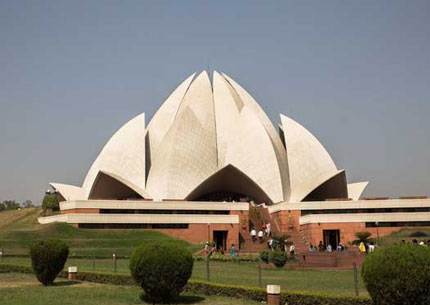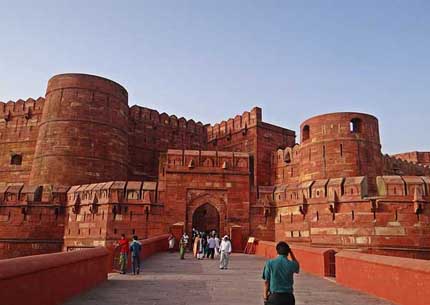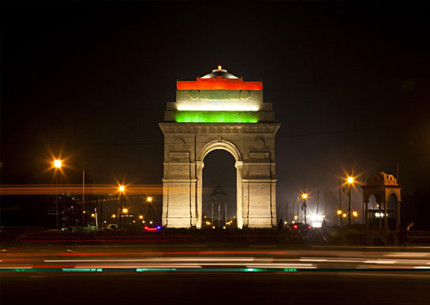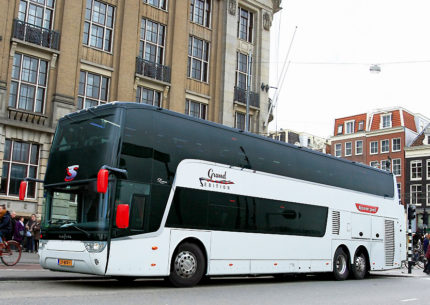Delhi is situated on the banks of river Yamuna in the northern part of India. Once a part of the Aravalies, today Delhi has only the Ridge area to tell the story of the greenery this place once had. Himalayas are in the North of Delhi.
The capital of India is a land locked city. The distance from the sea gives Delhi an extreme type of continental climate. The summers in Delhi are very hot and winters very cold. The temperature range varies from 45 degrees in summers to 4 degrees in winters. The winters are marked by mist and fog in the mornings and often sun is seen in the afternoons. The cold wave from the Himalayan region makes winters very chilly. In summers the heat wave is immense and adequate precaution has to be taken before going out in the hot summer afternoons.
The best season to visit Delhi is During the spring seasons of February to April and August to November. The bloom season of February and March make Delhi colourful. This time of the year brings greenery on the face of Delhi.
Humayun's Tomb : Built by the wife of Humayun, Haji Begum in the mid 16th century, this red sand stone structure is considered to be the predecessor of Taj Mahal. The structure is one of the best example of Mughal Architecture. Humayun's wife is also buried in the red and white
Old Fort : It is believed that the Pandavas had built their capital, Indraprastha at the place where the old fort stands today. This fort, now in ruins, was the seat for administration for many emperors. The legendary Prithviraj Chauhan ruled from here till he was defeated by Abdali in the battle of Panipat. A new light & sound show is held by the Department of Delhi Tourism every evening. Timings and Tickets are available from the tourist office.
Safdarjung Tomb : The Safdarjang tomb is besides the of Safdarjang airport. This tomb was built by the Nawab of Avadh for his father. The structure is one of the finest example of architecture of its time and tells a saga of the last remnants of a dying empire.
Jantar Mantar : Few minutes walk from Connaught Place is is a strange collection of solomon coloured structures. These were built by Maharaja Jai Singh and is actually an observatory. Though not as large as its compatriot in Jaipur Jantar Mantar at Delhi also an attraction for the tourists. The astonishing part of these observatories is that they can calculate many astronomical movements very accurately.
Red Fort : Built in Red Sand stone this imposing fort is 3 kms in perimeter with the height of the wall varying from 18 to 30 meters at places. When the Red fort was being built Yamuna used to flow on its one sides and there were deep moats on the other. Today Yamuna flows almost a kilometer away from the fort and the moats have dried up. In the evening the Delhi Tourism organises a light and sound show which narrates the history of Delhi in context of the Red Fort. The Lahore gate, the main entrance, has some emotions and sentiments attached with the Indian independence as the Tricolour flutters on the top of this gate.
On 15th August the Indian Prime minister addresses the nation from here. As soon one enters in the fort from the Lahore gate There is a small Bazzar, here all kinds of items are available. This Shopping arcade was known as the Mina Bazzar and was open only to women on Thursdays's during the Mughal era.
Qutab Minar : In 1199, Qutbuddin raised the Qutab Minar either as a victory tower or as a minaret to the adjacent mosque. From a base of 14.32 mtrs. it tapers to 2.75 mtrs. at a height of 72.5 mtrs. It is still the highest stone tower in India, one of the finest stone tower in India, one of the finest Islamic structures ever raised and Delhi's recognised landmark.
It was completed by the Sultan's successor and son-in-law, Iltutmish. The tomb of Iltutmish, which he himself built in 1235, is nearby, Its interiors are profusely decorated with calligraphy, though the dome has collapsed.
BOOK NOW


